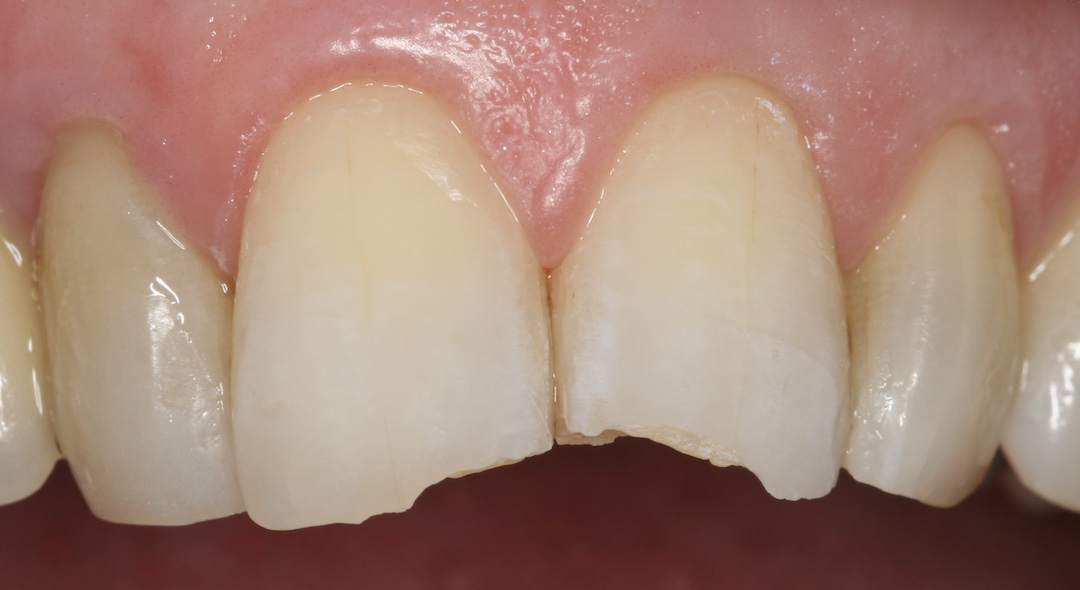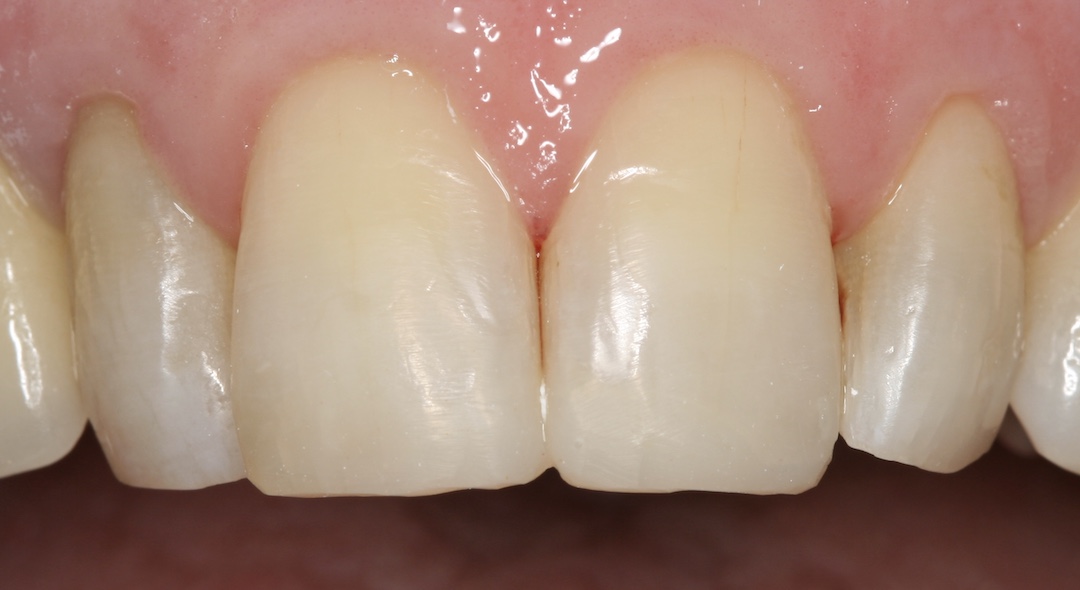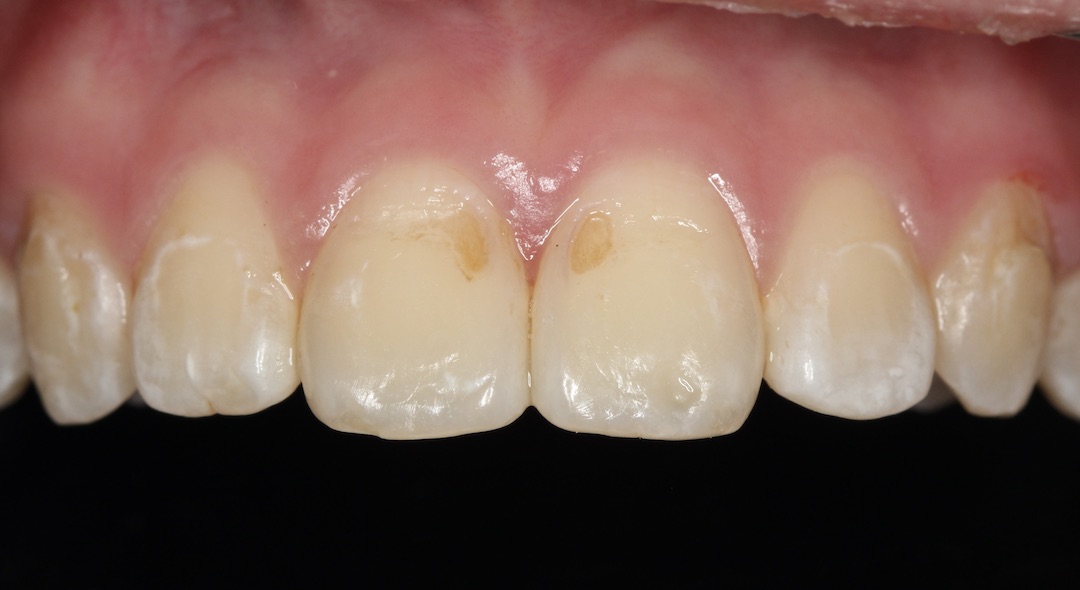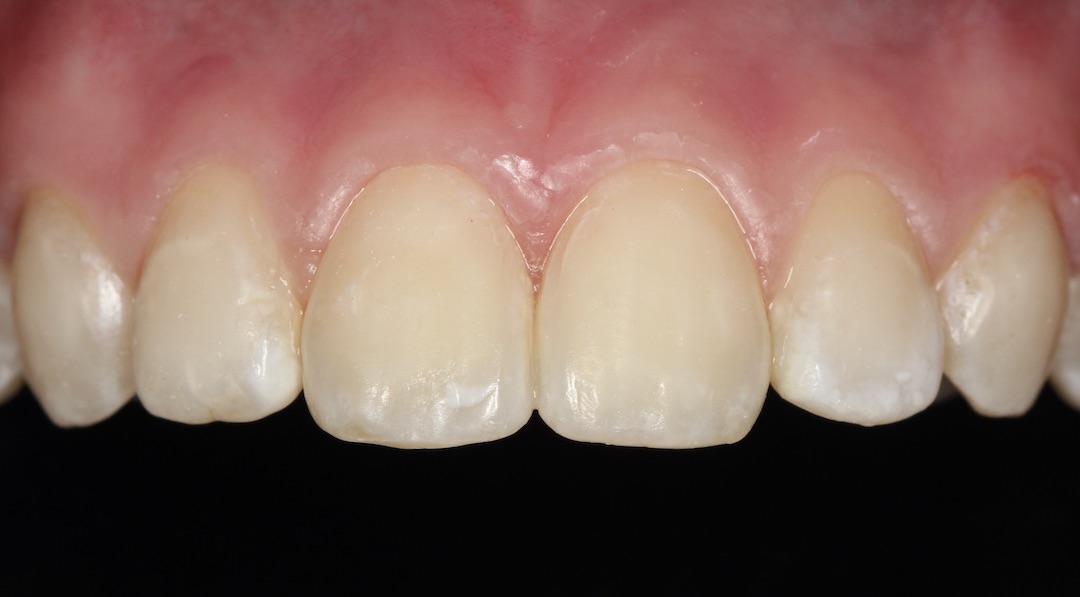Veneers
Veneers can greatly improve your appearance. They hide imperfections, and you lose very little natural tooth material. Veneers also protect teeth from any more damage.
What are Veneers?
A veneer is a thin layer of tooth-coloured material that is put onto the teeth to improve the look of crooked or worn down teeth, gaps and discolourations, restoring your natural, attractive smile. This is done because the teeth might have been damaged by decay or an accident, or might be badly discoloured for some reason. Veneers can be used to treat single teeth or to multiple teeth when carrying out a smile design treatment. Usually two or more visits are required to complete this type of treatment.
If you have any further questions please ask a member of the team and we will be more than happy to answer any of your queries.
Before and After
Frequently asked questions
Who is suitable?
As long as you have your own teeth, you may be suitable for veneers. A consultation will allow us to assess if this is the best treatment option to improve your smile.
What are the benefits?
Veneers can greatly improve your appearance. They hide imperfections, and you lose very little natural tooth material. Veneers also protect teeth from any more damage. Tooth surface can be dissolved away by acid in the mouth (usually from too frequent consumption of certain kinds of food and drink); this can make teeth very sensitive to hot and cold. In this situation, veneers can protect the teeth.
If the tooth is strong, a veneer is often a better option than a crown for improving a tooth’s appearance.
Does it hurt?
Occasionally you may get sensitivity after having veneers placed. In most cases this is usually transient and tends to go away. In teeth that are heavily compromised with restorations that are close to the nerve, the sensitivity may not go away. This sensitivity may be due to the nerve within the tooth dying and may require further treatment. The nerve can die due to pre-existing factors that are present and unfortunately may only become apparent when treatment commences.
What are the alternatives?
If the problem is misaligned or gappy teeth, orthodontics may be a better approach for many patients, and this will be discussed with you at your consultation. Many of our patients who wish to improve their smile combine their veneers treatment with tooth whitening to enhance the end result.
What will my dentist do?
Veneers are usually made out of porcelain by a dental technician. You will have to visit the dentist more than once for this type of treatment.
Depending on your needs and the type of treatment being carried out, your dentist may take photographs and study casts of your teeth and face. This helps to carry out the diagnostic phase and assists us in choosing the correct look for the veneers.
Your dentist will check any fillings in the teeth first to ensure there is no hidden decay. A very small amount of natural tooth material needs to be removed, just enough to prevent the veneer making the tooth look or feel bulky. Preparation time will depend on how damaged the tooth is and whether it needs to be built up with a filling first.
The dentist will need to use a putty-like material to make a mould of your mouth (called an ‘impression’), so the dental technician can tell the shape and size of veneer to make for you. Your dentist will bond the veneer made by the technician to the tooth when you next visit.
Your dentist will provide you with temporary veneers during the period that your veneers are being made. You may be asked to visit the technician so an accurate shade matching can be carried out. This also gives you the opportunity to discuss how you would like the veneers to look with the technician. Veneers can be made to look very natural and can be perfectly straight and white or can have more characteristics incorporated to suit your particular needs.
Veneers sometimes come away from the tooth or break if the tooth is knocked. They can sometimes be bonded back on, but will have to be replaced if they are damaged. Some veneers are built up on the tooth directly using the same material that is used for white fillings. The surface of the tooth is roughened with a mild acid. Then white filling material is applied in layers until the teeth look right.
How long do they last?
Research has shown that porcelain veneers usually last from 7 to 15 years, but this will depend on how well you look after your new smile.







